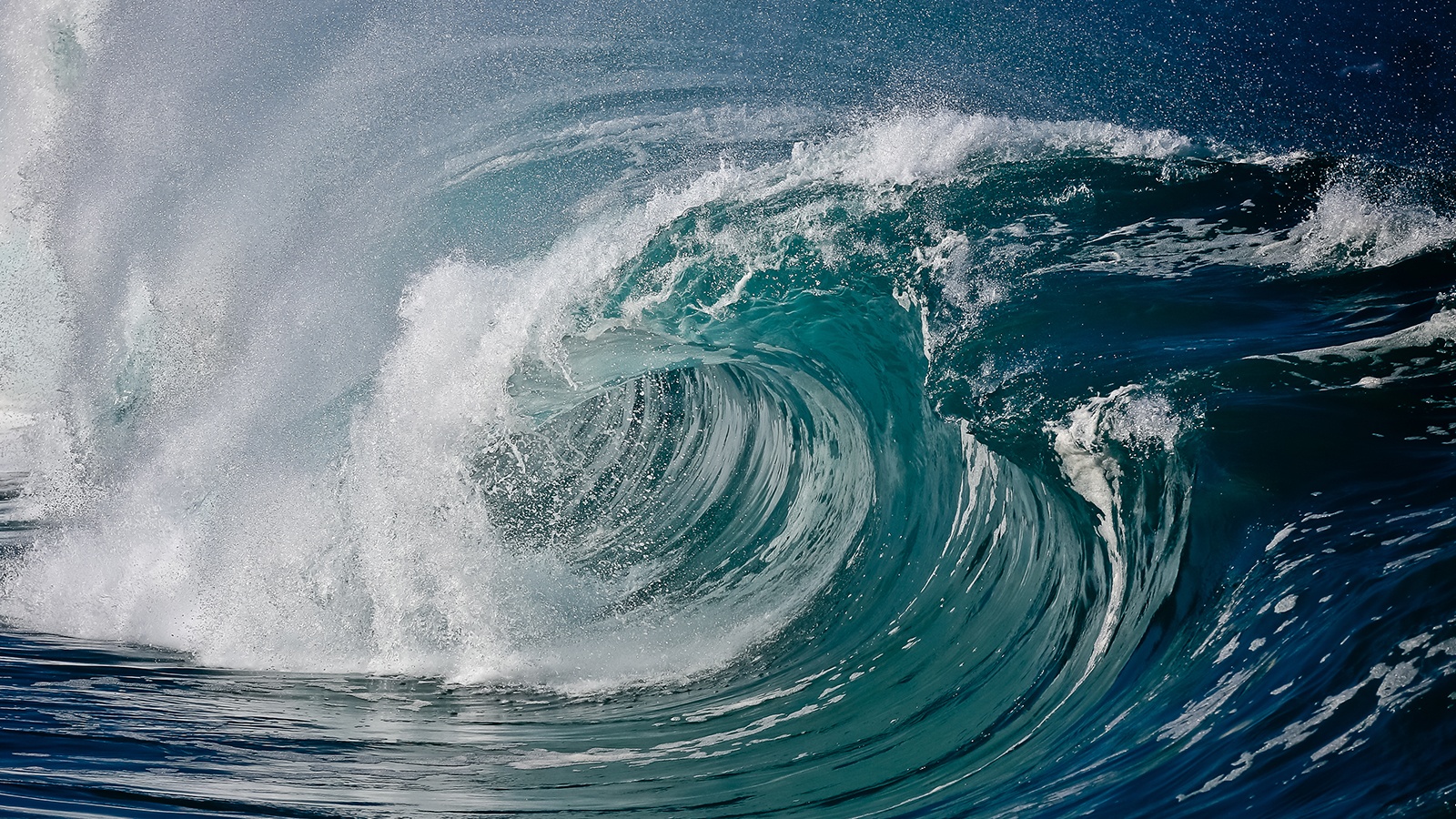
Tanya Weaver Mon 7 Apr 2025
Collected at: https://eandt.theiet.org/2025/04/07/underwater-sound-waves-key-unlocking-wave-energy-potential-finds-study
Underwater sound waves can be used to make surface waves more powerful to unlock their energy potential, say Cardiff University researchers.
The power in ocean waves offers immense potential as a source of renewable energy and immense threat through tsunamis. However, harnessing this energy and converting into a useful form has proven challenging.
Usama Kadri, lead study author, said: “The waves on the surface of the ocean are often created by a combination of wind raising up water and gravity pulling it back down – hence they’re sometimes referred to as surface-gravity waves.
“On the other hand, their underwater counterparts are sound waves produced by phenomena like earthquakes or volcanic eruptions, sometimes thousands of metres below the surface.”
These acoustic waves travel by compressing and expanding the water, similar to how sound moves through the air.
Acoustic waves travel across the ocean at the speed of sound in the water – around 1,500 metres per second – before eventually dissipating. In comparison, surface waves travel in the tens of metres per second.
The interaction of these two waves is a phenomenon known as triad resonance.
Kadri said: “This is where two acoustic waves transfer energy to a surface wave by matching its frequency, which in turn causes the surface wave to get larger and more powerful (by increasing its amplitude).
“This opens up the possibility of using an acoustic wave generator to generate sound waves tuned to a particular size and frequency that would enhance (or equally suppress) surface waves.”
The study finds that triad resonance could increase surface wave heights by more than 30%.
The next step by the research team is to produce more numerical simulations and to conduct a series of small-scale feasibility studies in the laboratory looking at how triad resonance works in practice.
In the same paper – ‘Resonant triad interactions of two acoustic modes and a gravity wave’ – published in the Journal of Fluid Mechanics, the researchers also looked at how underwater waves could be used to improve today’s tsunami early-warning system.
In 2017, Kadri published a study about the possibility of reducing the height of destructive tsunamis generated by powerful earthquakes with targeted natural deep sound waves.
The latest paper shows that it is theoretically possible to manipulate the size of a tsunami using this technique.
Kadri said: “The challenge lies in generating and directing the acoustic waves at the required scale and configuration in real-world conditions. This would be more challenging than using acoustic waves to help harness wave energy, not least because of the scale of tsunamis, which would necessitate a much more powerful acoustic-wave generator.”
The research also looks at the use of underwater microphones or hydrophones to measure acoustic waves. Hydrophones are able to capture the acoustic waves created by all of the phenomena that cause tsunamis, as well as the speed at which these waves travel.
According to Kadri, it would take just 30 hydrophone stations to cover the entire world’s tsunami high-risk areas, which would save many lives among coastal communities near the source of a tsunami.
In May 2024, Kadri and his team published a study detailing how signals captured by hydrophones could play a crucial role in locating aeroplanes that crash into the ocean.

Leave a Reply